Alyssa Flanders specializes in dermatology and aesthetic medicine. Many of you have already met her, whether for a skin check, acne treatment, or Botox and.CO₂ laser resurfacing. We are excited to celebrate her five year anniversary with us!
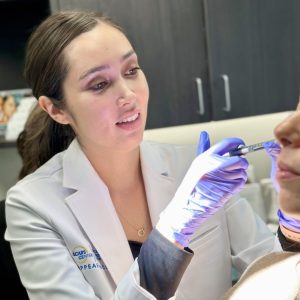
She is a graduate of Chapman University’s PA program, and is a nationally board certified physician assistant. Outside of clinical practice, she continues her involvement with Chapman’s PA program. She assists in interviews, dermatology lectures, and precepting students.
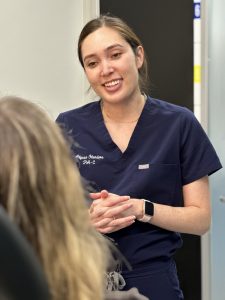
During her time at the Appearance Center and SCARS Center, she has been mentored by facial plastic surgeons, an oculoplastic surgeon, and both cosmetic and skin cancer dermatologists. She has confidently created her own unique practice by blending the expertise and mentorship of each specialty.
Alyssa is passionate about aesthetic medicine, primarily because it helps patients boost their self-confidence. She emphasizes foundational skin care and resurfacing that improves the overall skin quality and protects against both aging and skin cancers. She loves developing long-term relationships with her patients and helping them to look and feel their best.
How do you achieve a more youthful face if you are not ready for or interested in a facelift? Can you get great results without a facelift? We say, “Absolutely.” Short of a facelift, we recommend three effective procedures for a more youthful, refreshed look.
BLEPHAROPLASTY
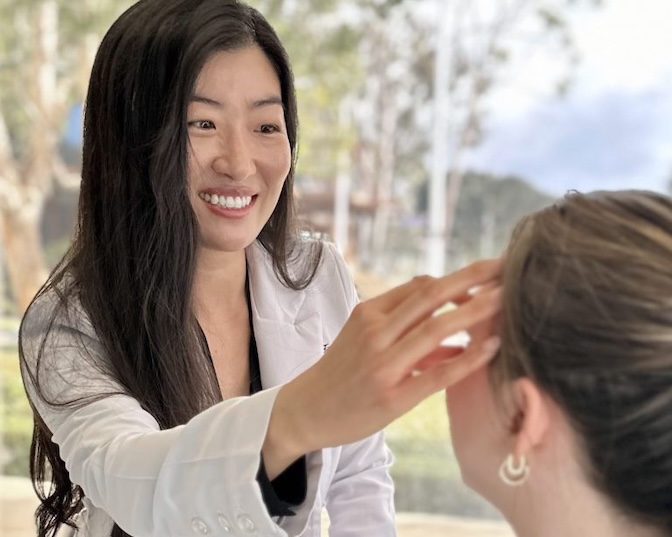
Blepharoplasty is a surgical procedure that improves the appearance of your eyelids. It helps reduce the look of tired eyes from your lower lids and removes drooping skin from your upper lids. You can focus on just the upper or lower lids, or address both at the same time.
CO2 LASER RESURFACING
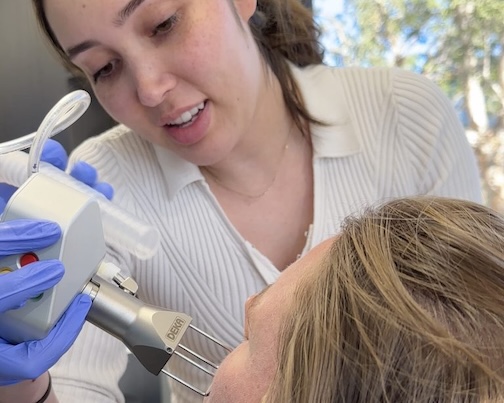
CO2 laser treatment aims to improve the appearance of the skin by removing the top layer and stimulating the formation of new skin cells. CO2 Laser Resurfacing is used to tighten the skin and to treat fine lines. It also treats wrinkles, sun-damaged skin, and scarring.
FAT TRANSFER
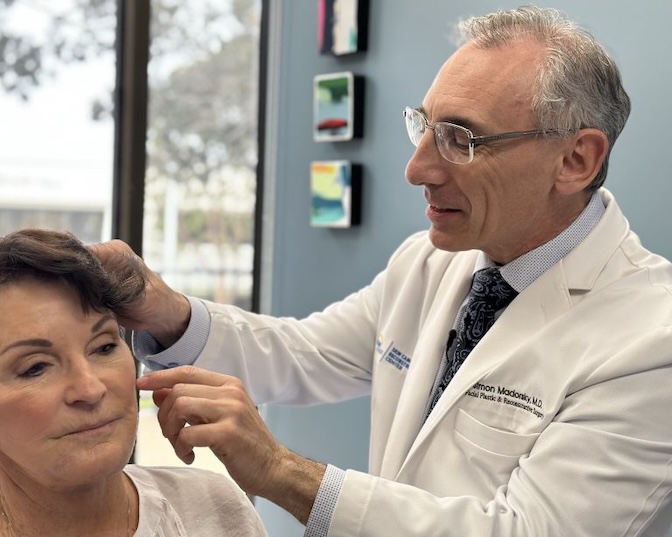
Facial fat transfer uses a person’s own existing body fat to restore volume to and plump sunken or sagging areas of the face. This procedure is used to treat deep creases on the forehead or between the eyebrows as well as hollow areas under the cheeks and eyes. It can also aid with contouring around the nose, temples, upper lip and the jaw.
Each of these procedures requires confirmation that you are a candidate, as well as some downtime.
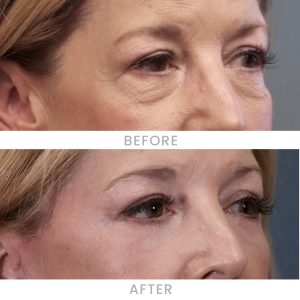
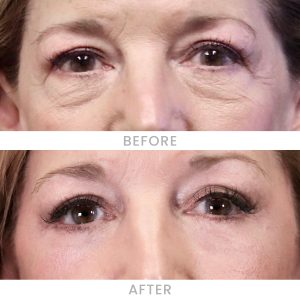
This patient had all three of these procedures: lower eyelid surgery with fat grafting and CO2 laser resurfacing of the skin around the eyelids.
When Should You Choose a Facelift?
While we have described some effective procedures for facial rejuvenation, sometimes these methods don’t do the trick.
Maybe you have tried injectables and chemical peels for a while, and they do not provide the long-term results you want. Or perhaps laser or radio frequency treatments just are not achieving what you want.
Whatever the reason, facelift surgery can achieve results that non-surgical results cannot match. Facelift surgery can reposition and lift facial tissues, which is something non-surgical options cannot replicate. It can also remove excess skin, which can roll back the clock on the face by years.
As we age, our temple areas lose fat, leading to a “hollow” look with a decrease in natural volume. Injectables such as hyaluronic acid dermal fillers or Sculptra can help fill in these areas and restore volume to the temple and brow area.
Injectables in the temple provide immediate results with little to no recovery time. It is a relatively quick, in-office treatment and does not require anesthesia. A topical or injectable anesthetic may be used to reduce pain from the injection.
Injectables are temporary but typically last 1-2 years in the temples before needing to be redone. These procedures are largely considered safe when administered by a skilled injector.
Dermal fillers we offer include Voluma, Restylane Contour, and Restylane Lyft. We also offer Sculptra, which is a biostimulatory injectable that stimulates collagen production. Each product has its own benefits. Consulting with a provider allows us to select the best product based on your goals and anatomy.
Neurotoxins—like Botox and Dysport—are a nonsurgical form of wrinkle treatment that have minimal discomfort and quick recovery rates.
Most of us know that these injections can improve forehead lines, crows feet, and the vertical lines between the eyebrows. But did you know that these injections can also benefit the lower face, including the chin and overall face shape?
This graphic shows both cosmetic and therapeutic uses for neurotoxins:
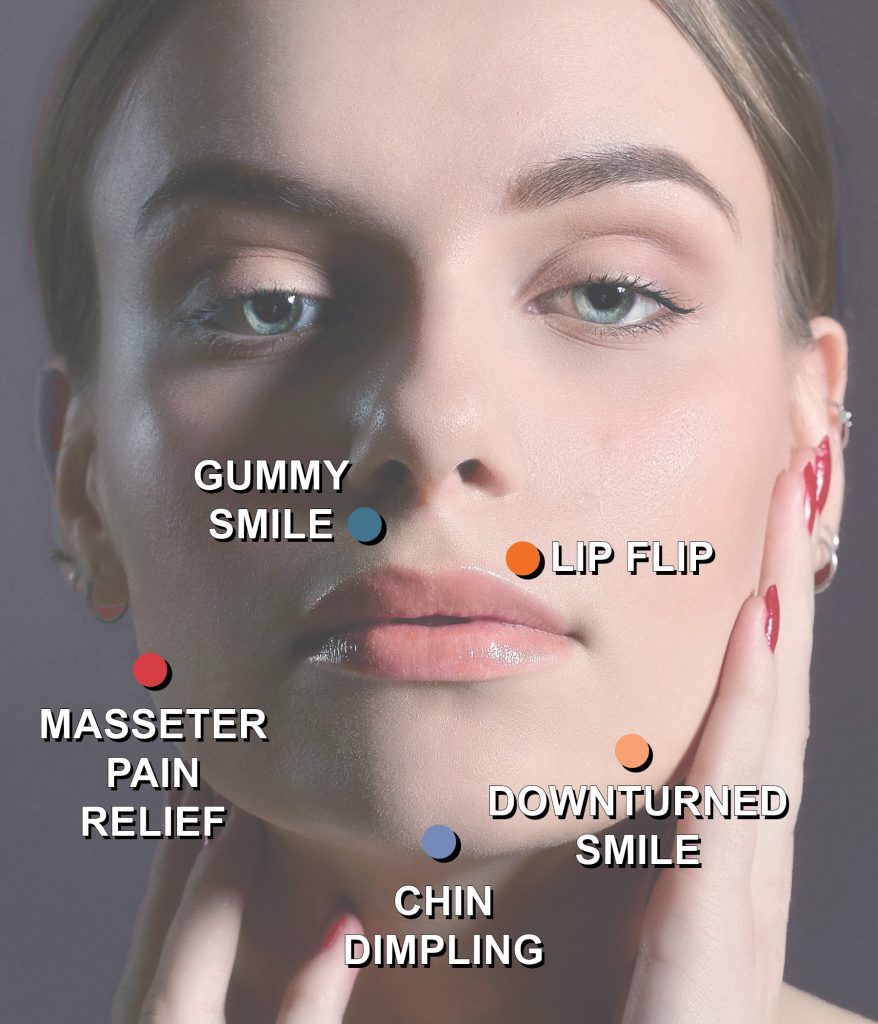
● GUMMY SMILE: Some people’s upper lip elevates too far above their upper teeth when they smile, exposing a large portion of their gums. Botox can lower the upper lip to reduce the visibility of the gums.
● LIP FLIP: A lip flip is a popular procedure that makes your lips look fuller without increasing the volume of your lips.
● CHIN DIMPLING: Sometimes the chin can appear dimpled or bumpy. Neurotoxins can relax the muscles in the chin area to smooth out its appearance.
● DOWTURNED SMILE: Injecting neurotoxins can weaken the muscles that pull down the mouth causing a downwards looking smile, or scowl.
● MASSETER PAIN RELIEF: Neurotoxins can be used to provide relief from the painful and uncomfortable symptoms of Bruxism. This condition causes involuntary teeth clenching, jaw pain, headaches, and tooth damage. Neurotoxin injections can reduce or eliminate these symptoms by relaxing the overactive masseter muscles. Additionally, when the masseter muscle is injected it can slim the overall look of the lower face.
Our team of expert injectors has extensive experience with facial injectables.
Non-Surgical Option: Are You a Fan of Fillers?
Do you wish your lips could be plumper or more balanced? Thanks to dermal fillers, this wish is easily granted. We offer products specifically formulated to enhance and augment the lips to your desired size and shape, or to correct asymmetry.

Juvederm: For Silkier, Smoother, Natural-Looking Lips
Juvederm products utilize hyaluronic acid to create instant volume in the exact way that your lips need it most. Juvederm Vollure is specially formulated with a balance of gel firmness and low cohesivity, which subtly adds volume. This means that it is firm enough to hold its shape, but malleable enough to move, making the results noticeable yet natural. It lasts up to 18 months.
Juvederm Ultra adds fullness to the lips, while Juvederm Volbella adds subtle volume and even softens the appearance of vertical lip lines. Both of these products last between six and 12 months.
You only need around 30 minutes for your dermal filler lip treatment.
A Surgical Option for Fuller, Lifted Lips
A lip lift is a surgical procedure that shortens the space between the nose and the top of the lip. This increases the amount of pink lip tissue that’s visible, which makes the lips look fuller and more pronounced. It can also increase how much your upper center teeth show when your lips are resting. It leaves a small scar at the base of the nostrils, but it is usually undetectable after a few weeks.
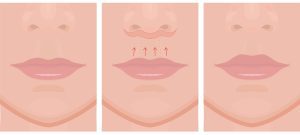
It’s a good option for people who want to add height instead of volume to their lips. Younger people who haven’t achieved the look they want from fillers, or if they find that fillers make their lips look unnaturally plump or duck-like, may prefer a lip lift.
And a lip lift is a good option for reducing the space between the lips and the nose. With age, this space can increase and can make the upper lip look thinner.

We are offering a new product that is the first of its kind. SkinVive is often referred to as a “skin booster” rather than a filler since its job isn’t to rebuild volume like other fillers, but rather to hydrate your skin and give you a glowy look.SkinVive, developed by Juvederm and approved by the FDA in May, is now available to our patients. This new treatment can add long-term hydration to the skin and smoothness of the cheeks. These injections also stimulate collagen production, helping to correct lines and wrinkles while improving skin elasticity. Following treatment, skin quality is vastly improved with patients reporting skin that feels and appears more radiant and refreshed.
SkinVive is a minimally invasive treatment with little to no downtime. It works synergistically with other cosmetic treatments like Botox, lasers, and dermal fillers. SkinVive can easily be added to your Botox treatment and it takes only about 10-15 minutes.
How is SkinVive Unique?
Unlike traditional dermal fillers that replace lost volume or define facial features, SkinVive’s tiny microdroplets are injected near the skin’s surface, enhancing skin hydration and smoothness.
What are the Benefits of SkinVive?
- Improves skin smoothness
- Increases skin hydration from within
- Reduces lines and wrinkles
- Stimulates collagen production
- No downtime following treatment
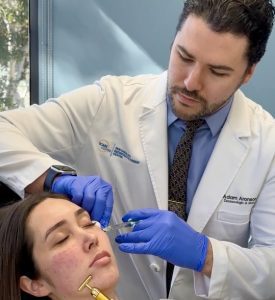
What Facial Areas can be Treated with SkinVive?
SkinVive is currently FDA approved to improve skin smoothness of the cheeks.
How Does SkinVive Work?
Aging leads to a loss of collagen, elastin, and hydration, resulting in lines and wrinkles. SkinVive’s hyaluronic acid replenishes hydration and combats aging effects, leaving the skin plump and hydrated.
How Long Does SkinVive Last?
Most patients experience improved skin hydration and smoothness for up to six months. Individual results may vary based on skincare routines, genetics, and other treatments.
Is SkinVive Right for Me?
During your consultation, your provider will assess your aesthetic goals. If you suffer from dry skin, fine lines, or loss of elasticity, SkinVive could be an excellent choice.
Whether you’re looking to reduce wrinkles, minimize scars, or improve overall skin texture, CO2 laser treatment could be the answer.
What Does Fractional CO2 Laser Do?
Fractional CO2 laser is a cosmetic procedure that improves skin texture, tone, and overall appearance. The laser ablates the top layer of skin removing sun damage as well as creates microscopic channels in the skin, known as microthermal zones. These processes stimulate the body’s natural healing response, which promotes collagen production and triggers the replacement of damaged skin with new, healthier tissue.
Key Benefits of Fractional CO2 Laser Treatment
- Wrinkle Reduction: especially of lower face
- Scar Improvement: acne scars and surgical scars
- Pigmentation Correction: uneven pigmentation, sunspots, and age spots
- Treats superficial sun damage
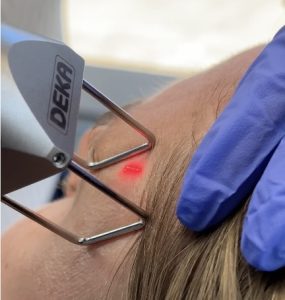
Who Is a Good Candidate?
Fractional CO2 laser is a versatile treatment suitable for patients of various ages and skin concerns. Ideal candidates include those looking to improve fine lines/wrinkles, scarring, and/or dark spots. It is safest for patients with lighter skin tones (Fitzpatrick I-III).
The Procedure
A fractional CO2 laser procedure can be performed in the clinic or operating room. Here’s what you can expect during the treatment:
- Consultation: Before the procedure, you will have a consultation with a qualified practitioner to discuss your concerns, assess your skin, and determine if fractional CO2 laser is the right option for you.
- Day of Treatment: Topical Anesthesia: a topical anesthetic is applied to the treatment area to minimize discomfort
- Pre-Medication: Your clinician may prescribe some medications to make the process more relaxing and comfortable.
- Nerve Blocks: You may receive lidocaine injections to further numb the sensitive areas of treatment
The laser treatment is customized based on skin, treatment areas, and goals. The laser can also be performed in the OR setting and combined with additional facial rejuvenation procedures such as eyelid surgery or facelift surgery.
Recovery Process
- Immediate Recovery: The treated area will likely be red and swollen after the procedure. It may feel similar to a bad sunburn.
- Peeling and Flaking: Over the next few days, the skin will begin to peel and flake as the damaged outer layers are replaced with fresh, new skin. It’s important to avoid picking at the skin to prevent scarring.
- Sun Protection: Protecting your skin from sun exposure is crucial during the recovery period. Sun exposure may lead to increased hyperpigmentation.
- Total recovery time depends on intensity of treatment
Please contact the Appearance Center to consult with a qualified practitioner.
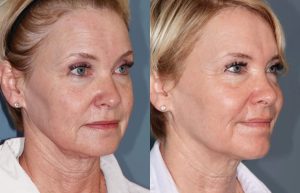
The jawline can be a crucial part of facial aesthetics. A strong jawline in men is often associated with attractiveness and confidence. For women, a jawline can represent youth and beauty.
Allergan (the maker of BOTOX and JUVEDERM) has just released a filler created specifically for the jawline. This long-lasting filler is now available at aesthetic practices for patients over the age of 21 with moderate to severe loss of jawline definition.
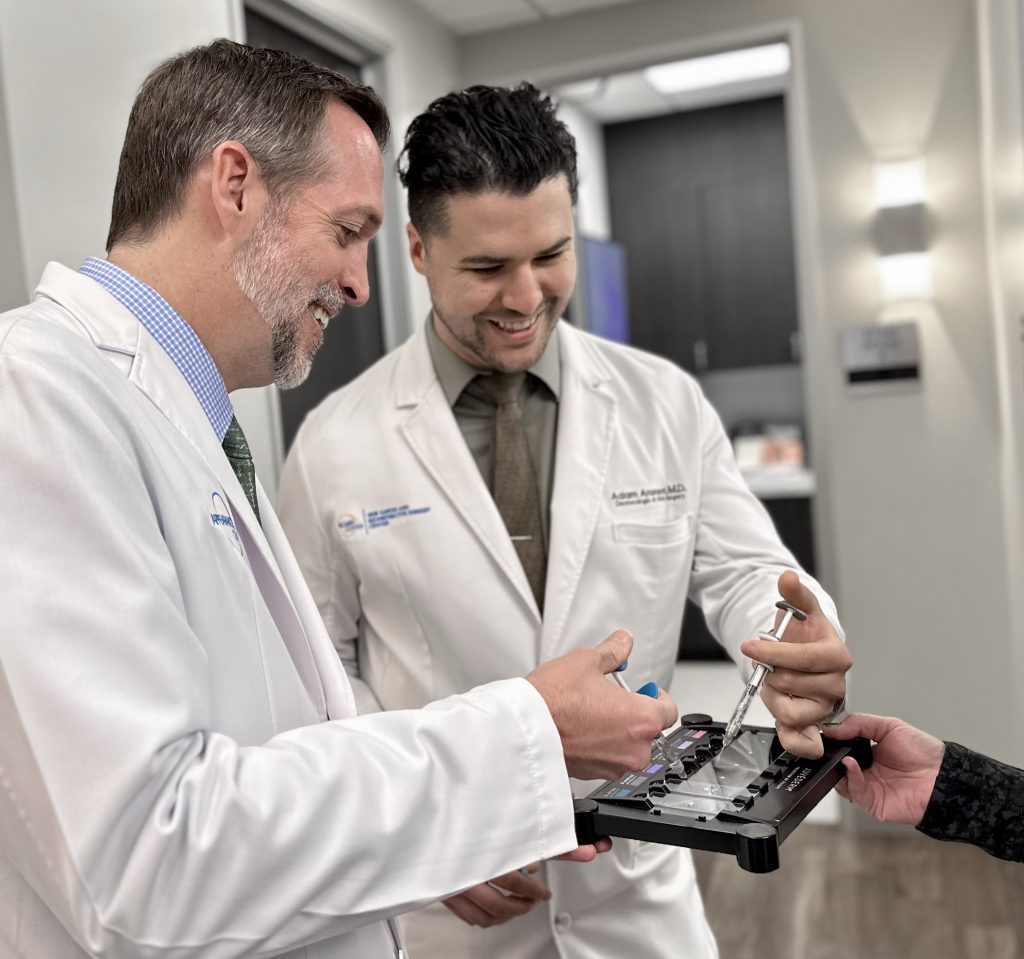
VOLUX is a slightly more cohesive and thicker formula than JUVEDERM VOLUMA. Both of these fillers build volume and create a lift beneath the skin, but while VOLUMA is FDA-approved for the chin and cheeks, VOLUX is FDA-approved to treat the chin and jawline.
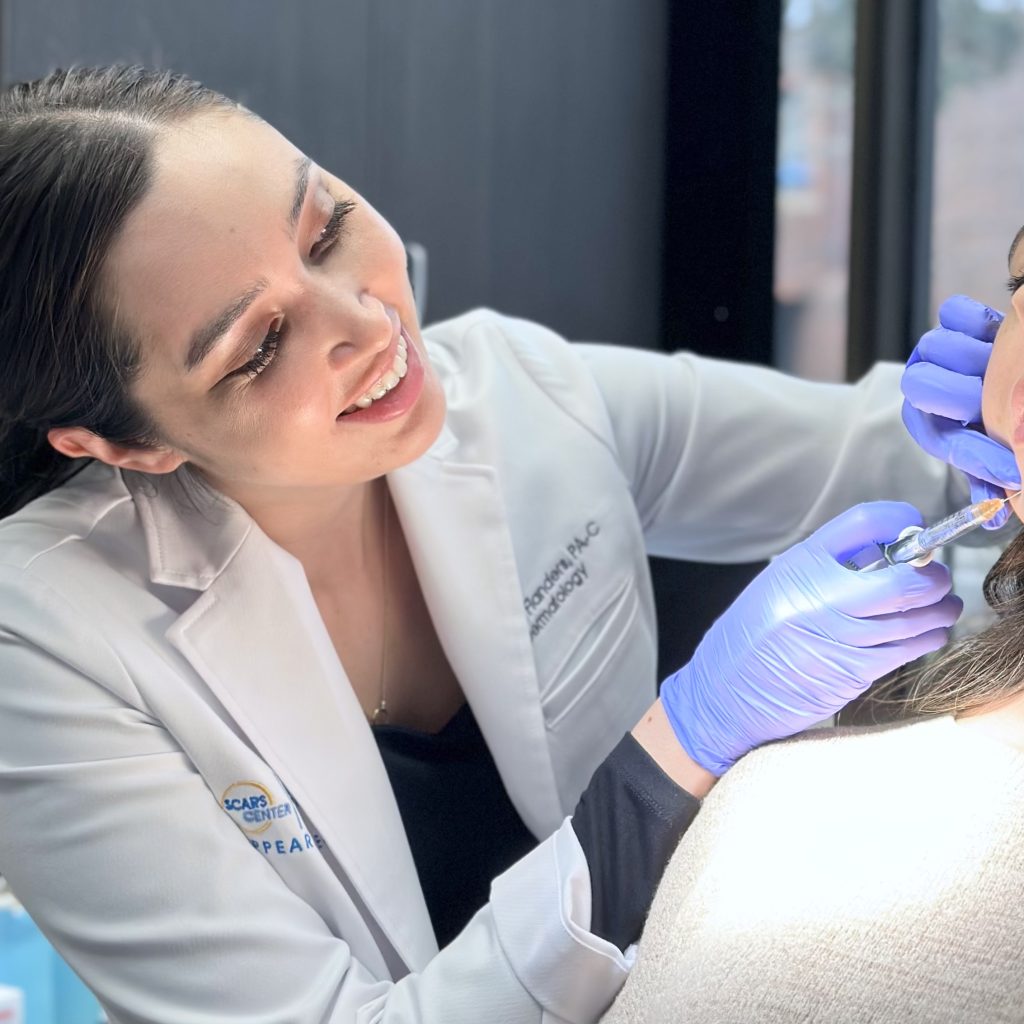
The procedure only takes a few minutes, and any swelling is dramatically improved within 48 hours. Results last between 12 and 18 months.
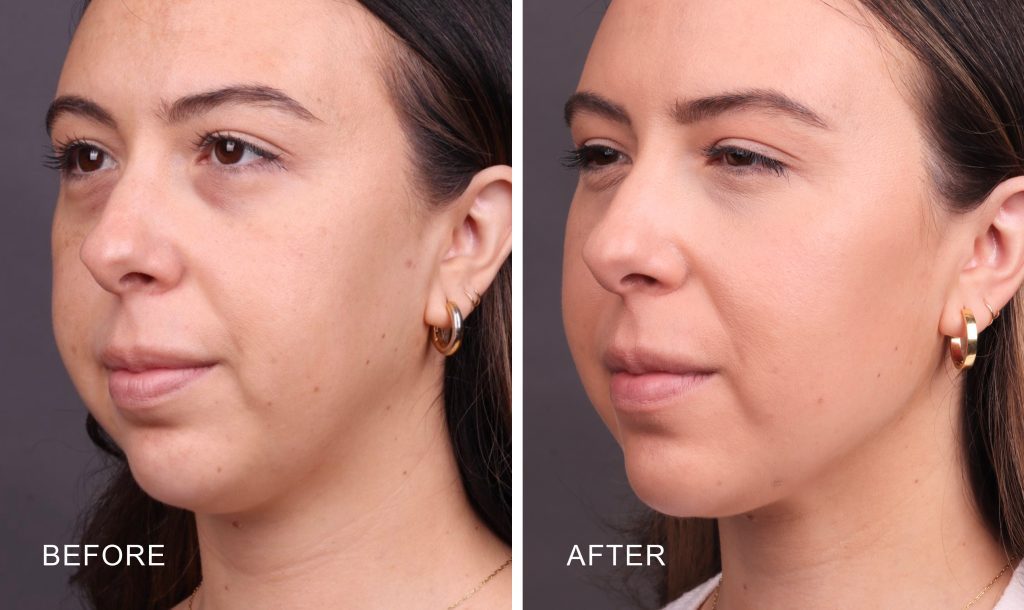
All of our providers are expert injectors and can help you to assess your jawline and other aspects of facial aesthetics. Call us to schedule a consultation.
Dermal fillers, also called injectables, are a safe and effective way to enhance your appearance without the need for invasive surgery or downtime, but results are very dependent on the injector. At the Appearance Center, our providers are highly-trained medical professionals, familiar with the unique anatomy of the face, and have had extensive training and years of experience.
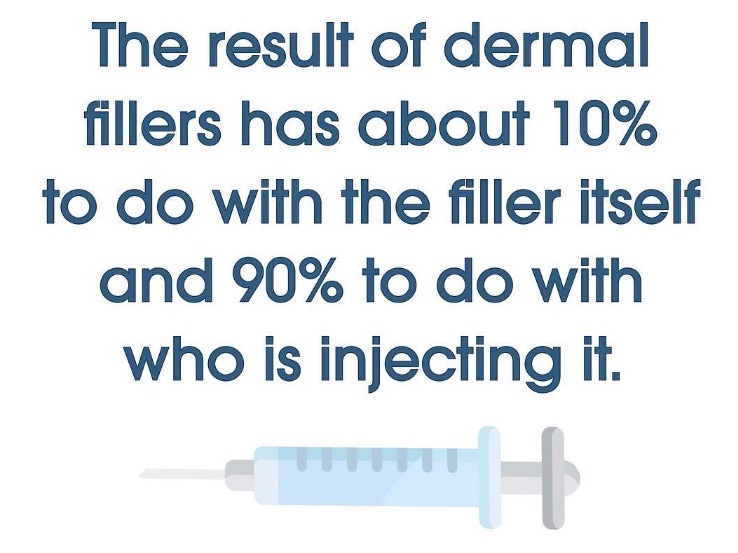
Dermal fillers can be used to address a variety of different cosmetic concerns – restoring lost volume to depleted areas, creating more attractive facial contours, and improving symmetry.
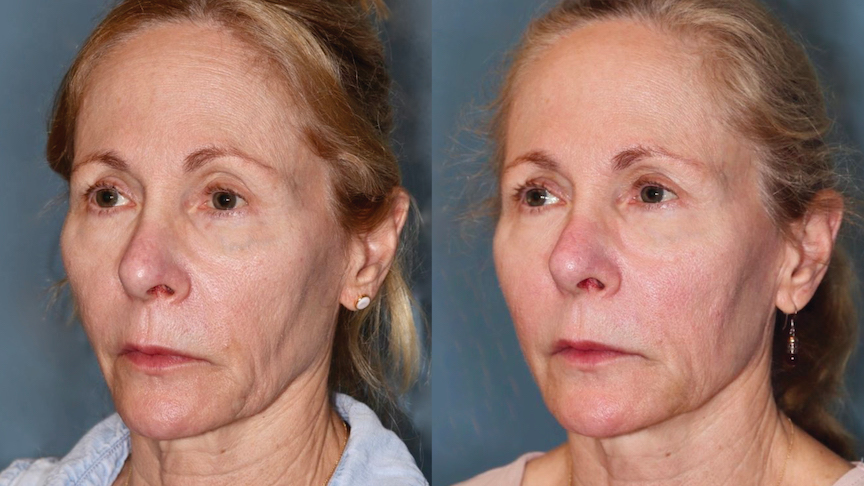
FIGHT THE SIGNS OF AGING
As the skin is subjected to elements over time, the appearance of a face changes. Dermal fillers reverse this by giving a person back the facial volume they may have lost. These fillers can also make the cheeks look more contoured, give a more defined jawline, and overall make a patient look refreshed.
One of the great things about dermal fillers is that virtually no recovery time is required. After their treatment session, patients can usually return to most activities right away.
More good news: The results of dermal fillers are not permanent. If you don’t love your results from dermal filler injections, take heart knowing the effects are temporary.
Filler technology enables results to last six to 18 months although there is variation between individuals, as well as according to the type, quantity and depth of the dermal filler placed within your skin.
In many cases, a skilled cosmetic eye can make more immediate corrections or improve upon your previous results. Our providers are also experienced with correcting over-filling or wrong-site filling done at other locations.
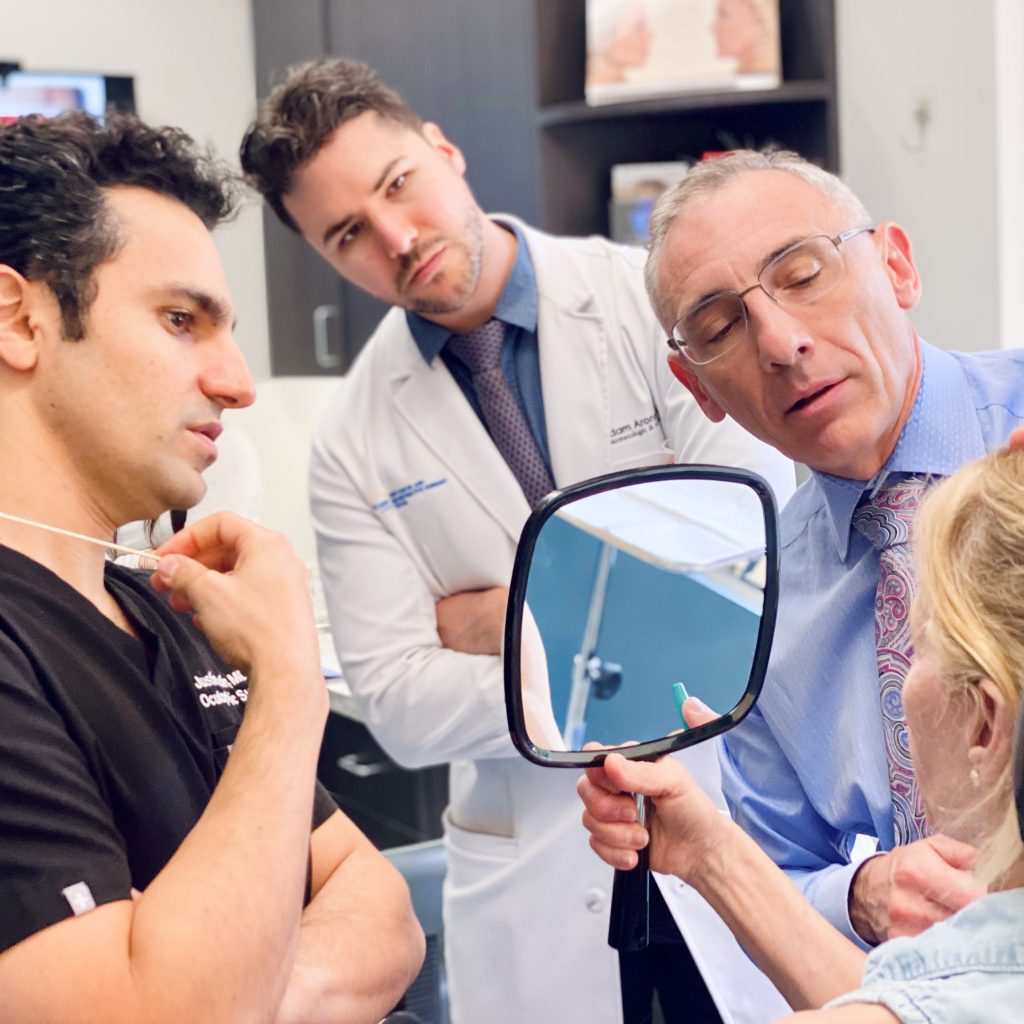
“I just want to look “x” years younger” is a common request in the dermatology or plastic surgery office. One way to accomplish that is to restore facial volume. Most of us may not initially recognize volume loss in our face because we see ourselves everyday. But the changes become stark when we look at old photographs. Restoring volume is an important and common approach to helping patients achieve the results they desire.
Hyaluronic acid injections, commonly known as “fillers,” are a popular way to increase facial volume. Injectable filler is relatively quick to perform, has minimal downtime, and provides immediate results. The main downside of filler is that the results are temporary, typically lasting between 6 and 18 months.
A more permanent way to increase volume is fat transfer. Fat is usually collected from the abdomen and strategically injected into areas of the face. It requires from 1 to 3 separate injections spaced 6 weeks apart to achieve results. Fat integrates well and the results last, which probably sounds great. But is there a catch?
Potentially. An important consideration of fat grafting is that the fat acts like the donor site (abdomen), not the recipient site (face). While people lose weight and volume in their face as they age, they often gain weight in other areas, including the abdomen. As a result, if the patient gains weight over time, the fat in the face will grow too. A well qualified doctor or PA will be able to make the appropriate judgment regarding the volume of fat appropriate to inject.
Because of fat’s potential to grow, the best candidates for fat transfer tend to be older patients, of stable weight, and if applicable, post-menopausal. Otherwise, filler is a great option to add volume and can be tailored as the patient ages.
